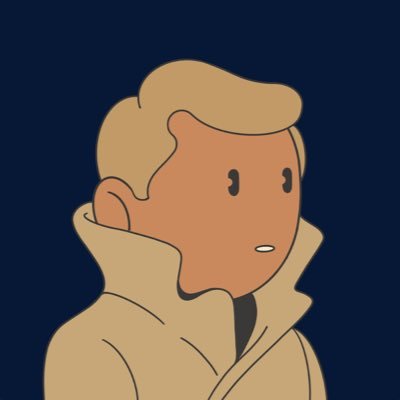About Fran Rodríguez

Fran Rodríguez aka lacabezaenlasnubes (spanish for "head in the clouds") is a digital artist based in Spain.
He is famously known for his striking images depicting his interpretation of humanity's place in the universe. Fran's work is deeply inspired by his early fondness of surrealism and psychedelia.
In his 20 year career, he has worked with bands such as Weezer, Tame Impala and Tycho creating visual elements for their concerts and albums and his work is exhibited and sold all over the world
An interview with Fran Rodríguez led by Carlo Borloni


Can you tell us about your early fascination with surrealism and psychedelia? How did these influences shape your artistic journey?
I don't remember when I discovered surrealism, probably at school.
But I do remember being immediately attracted by the free interpretation of reality, the breaking of all rules, the most absolute freedom.
From that moment on, surrealism and later on psychedelia, which I discovered through music, marked my growth as a person and as an artist.
What we perceive through the senses was not enough for me and I always tried to see everything through a distorted prism, distorted by dreams, consciousness-altering substances and, in general, by an attitude that questions everything and tries to see it in ways different from the obvious.


Your career spans over 20 years and includes collaborations with bands like Weezer and Tame Impala. How did working with musicians influence your artistic style?
Music has always had a tremendous importance in my life.
Since I started working in graphic design, combining music and art has always been a dream, a goal that I was finally able to make come true. And not only that, but I have been able to work with artists I admire.
I always work with music playing, it's my main source of inspiration. So having the opportunity to capture in images the songs of some of my favorite bands is a real joy.


Looking back, what were some pivotal moments in your career that led you to where you are now as an artist?
Undoubtedly, the first and perhaps most important was the discovery of photoshop, now 25 years ago. It was a discovery that changed my life forever and opened up a whole new world to me. Suddenly I had a new language in which to express myself.
The other big moment was probably when I was commissioned to do the cover of Weezer's “Pacific Daydream” album. It made thousands of people around the world aware of my work and gave me many job opportunities, since then I have created covers and posters for dozens of international bands.


You've worked with digital art for many years. How has the evolution of technology impacted the way you approach your art today?
Although I have drawn and painted all my life in an analogical way, once photoshop and other digital art tools came into my life, my way of expressing myself creatively changed radically and multiplied, becoming a richer language and giving me the possibility of being able to make works much more faithful to the visions and ideas that occur in my head.
More recently, blockchain technology has granted me a wonderful opportunity to be able to turn my art into something transcendent and, I hope, eternal.


The new collection, "Escuela de fantasía," draws inspiration from both vintage imagery and AI elements. What motivated you to revisit collage techniques in this series?
I fell in love with collage many, many years ago. It is the language in which my mind manipulates and distorts the world. Realistic finishes in impossible, unreal combinations.
The evocative and nostalgic power of old images captivated me since I was a child, when I looked at my mother's old album covers and watched documentaries about the sixties and the summer of love on TV.
Being able to generate images set in that era but that never existed, is something with a great evocative and sentimental power for me.
The idea that these people didn't exist but are based on photos of people who did live through that era, seems to me to be of great poetic value.


Can you tell us more about the moment you created this collection with your son? How did his perspective influence the final outcome?
In these last months my son asks me, every few days, to draw with the computer. I have taught him to cut out elements and move them around the canvas.
He goes crazy with excitement and goes into a kind of ecstasy when some combination is especially funny to him.
The moment when he erased some grass fragments in the piece “Fantasy #2” of this collection I will remember all my life as one of the most beautiful moments of communion with my son and with the purest part of the creation process.
The desired and pursued Eureka moment, when everything fits together and all waiting, and anguish is worth it, at last.


You mention that the series is a "psychedelic homage to childhood." How does this theme of childhood exploration connect with your personal experiences or memories?
Since I became a father, I think a lot about childhood, about how everything we live and experience during those years has a definitive influence on the adult we become.
Remembering my childhood, melancholic but very happy, being able to live in real time that of my children and being part of it, is being one of the most stimulating processes and stages on an artistic level of my life.
This collection was born from a mental projection: what would my ideal school be like. Escuela de fantasía.


The combination of old National Geographic images and AI-generated elements is quite striking. What does this fusion of past and future represent to you?
The idea of combining scanned elements from original magazines from the 1960s and photographic elements generated by an AI fed with photos from that time seems very interesting to me.
I am definitely in favor of an ethical use of AI as a tool and I do not use any element with artistic value that copies the style, technique or concepts of another artist, living or dead.


In "Escuela de fantasía," you've emphasized a more raw, unpolished approach with rough cuts and minimal production. How does this align with your vision for the collection?
Although my usual collage style is one with a high level of care and production in terms of finishes, cuts and shadows, I also enjoy a much rawer and fresher approach, cutting and rearranging. Feeling the magic of analog collage again.


What do you hope audiences will feel or take away from this collection when they experience it for the first time?
As with all my work, I would like to be able to convey a curious and fascinated view of the universe. Wonder at the beauty and mystery of nature and the cosmos is what made me an artist and is what I would love to be able to make people who look at my work feel.

Sign up for our newsletter to keep up with the latest news from NINFA
Sign up for our newsletter to keep up with the latest news from NINFA
Write us at: info@ninfa.io, or click here if you need support
Copyright © 2025 Ninfa Labs - 12094240962 - All rights reserved

